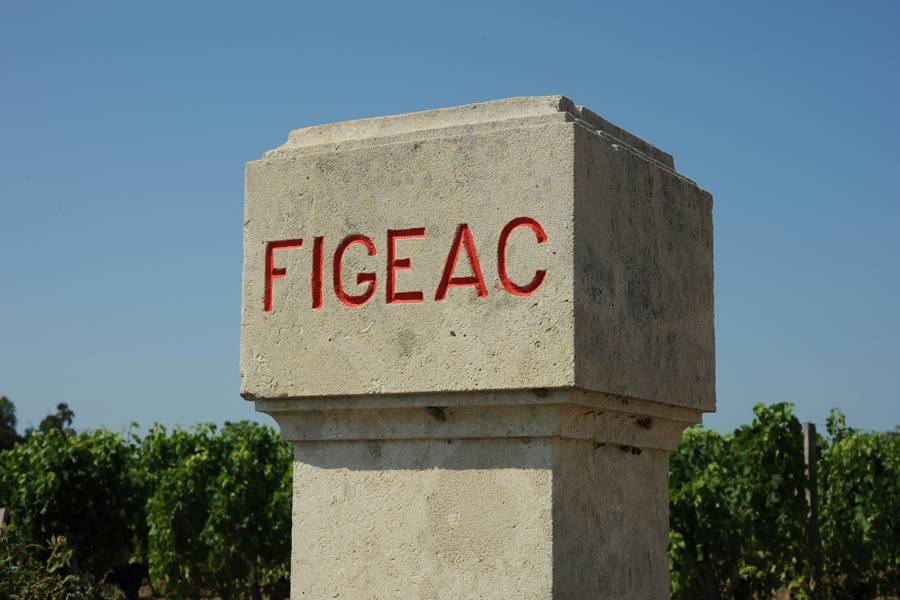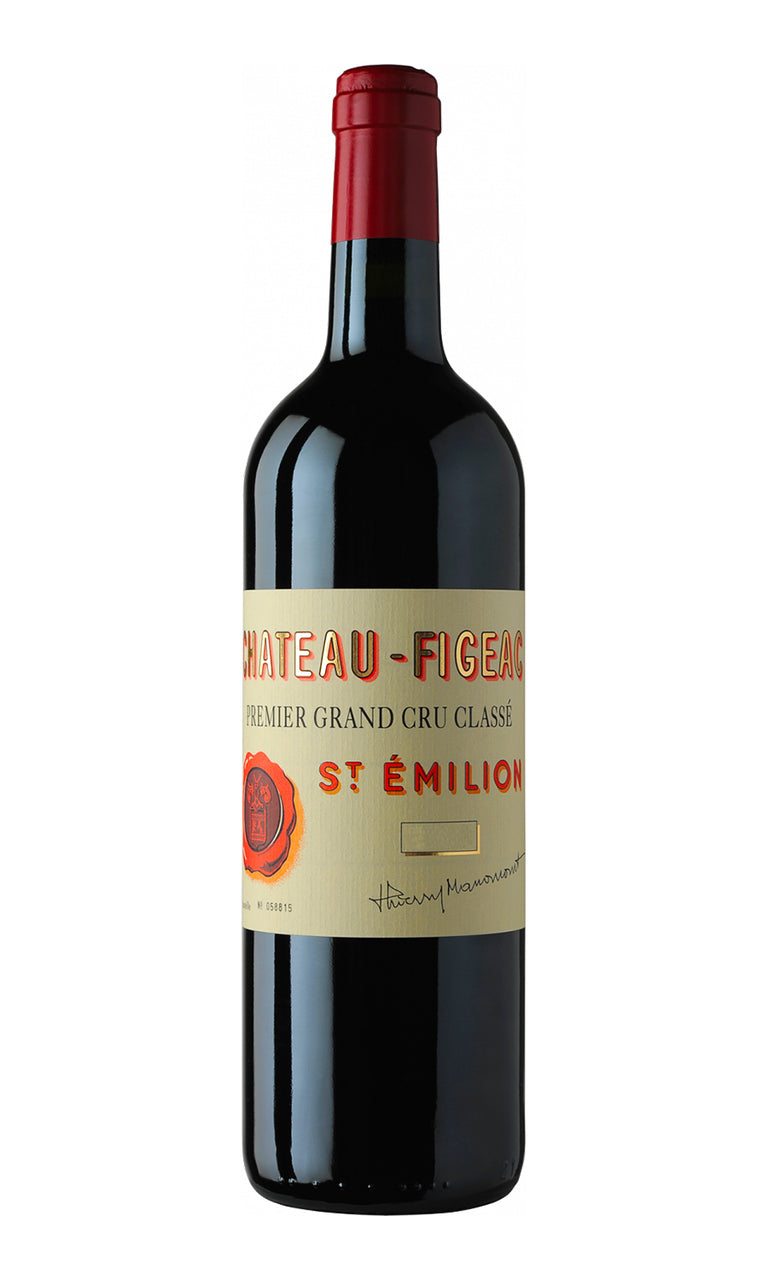- Colour Red
- Producer Château Figeac
- Region St Emilion
- Drinking 2025 - 2050
- Case size 6x75cl
- Available
2016 - Ch Figeac 1er Grand Cru Classé St Emilion - 6x75cl
- Colour Red
- Producer Château Figeac
- Region St Emilion
- Drinking 2025 - 2050
- Case size 6x75cl
- Available
No further quantities available
Go To CheckoutNeed help? Call +44 (0)20 7793 7900 or email wine@goedhuiswaddesdon.com.
-
Goedhuis, April 2017, Score: 97-98
2016 really played into the hands of this great estate, showing the very best of its Cabernet and Merlot vines. A blend of 36% Merlot, 38% Cabernet Sauvignon and 26% Cabernet Franc, this is a hugely classy wine. Deep black cherry colour, a very full an unctuous wine, it is drenched in rich black cherry fruits. Dense and concentrated without excess, this has great Cabernet drive and intensity, with hints of Merlot-esque flamboyance. Quite simply delicious. DR
-
Neal Martin, January 2019, Score: 100
The 2016 Figeac was bottled at the end of July 2018, since Frédéric Faye wanted to give the wine more time in barrel to develop more harmony. The stunning 24-carat bouquet rivets you to the spot with brilliant delineation and mineral-rich red fruit that articulates its terroir as well as any Right Bank you will find. The palate is medium-bodied with svelte tannin, perfect acidity, wonderfully integrated new oak and enormous depth toward the fresh, pencil-box- and cedar-infused finish. This is a classic Figeac, up there with the 1947 and 1949, both recently re-tasted and testifying to a wine that genuinely belongs among the elite Saint-Émilions. Faye believes it is the best Figeac he has ever made. He is correct. 2023 - 2060
-
Neal Martin, April 2017, Score: 98-100
The 2016 Figeac is a blend of 36% Merlot, 26% Cabernet Franc and 38% Cabernet Sauvignon, picked from 23 September until 20 October at 49 hectoliters per hectare with 13.9% alcohol. The acidity is 3.67 pH, and it matured in 100% new oak (focused on five cooperages). This is a property that opened a new chapter in 2013, when Michel Rolland's services as a master blender have been called upon and engendered far greater harmony between the three grape varieties, now all singing from the same hymn sheet. It has a crisp blackberry nose, a little closed at first, opening nicely in the glass and offering raspberry coulis, pencil box and subtle mint aromas—classic Figeac in many ways. The palate is extraordinarily well balanced with a fine lattice of tannin sculpted to perfection. There is a slight edginess to this Figeac that I adore, the Cabernets very expressive, more so than the 2015, with graphite infusing every pore of the black fruit. This Figeac has an outstanding structure and a saline finish that beckons you back for another sip. The 2015 Figeac was stunning and the 2016 no less. Tasted on four separate occasions, and in the end, only one (banded) score became inevitable. Drink Date 2026 - 2060
-
Antonio Galloni, January 2019, Score: 98+
The 2016 Figeac is simply extraordinary. A wine of pure energy and vitality, the 2016 pulses with a real sense of drive. Lavender, mint, crème de cassis and cedar start to develop in the glass, but what is most remarkable about the 2016 is its total sense of harmony. There is natural tension, a sort of push and pull, between the wine's intense fruit and structural underpinnings that makes the 2016 a marvel to taste and contemplate. It was positively stunning in two separate tastings. Technical Director Frédéric Faye and his team made an epic Figeac in 2016. 2026 - 2066
-
Antonio Galloni, April 2017, Score: 94-97+
The 2016 Figeac has been super-impressive on both occasions I have tasted it so far. A big wine, the 2016 exudes depth and power. Even so, the forbidding tannins are almost shockingly buried by the sheer intensity and purity of the fruit. Graphite, savory herbs, smoke, menthol, licorice and smoke are some of the many accents that infuse the huge finish. As good as the 2016 is today, it is clearly for readers who can afford to be patient, as it will likely be many years before the wine is ready to drink. Technical Director Frédéric Faye, consulting winemaker Michel Rolland and the team have done a superb job with the 2016.
-
James Suckling, April 2017, Score: 96-97
Splendid texture and finesse to this young Figeac with a pure silk texture. Full-bodied and ultra-fine. Lovely combination of fruit and freshness. The polish is gorgeous to this. Precision redefined. Pretty follow-up to the 2015.
-
Jancis Robinson, April 2017, Score: 19
36% Merlot, 26% Cabernet Franc, 38% Cabernet Sauvignon. No pigeage, more like an infusion with gentle remontage. Lively and very Figeac. Just as it should be. Zesty and confident and of the place. Rich palate entry and then lovely freshness. Firm and glorious. Like an arrow. Very pure. Frédéric Faye and the Manoncourt family should be very proud. Classic. Racy and juicy and beautifully balanced. Long. 14%. Drink 2024-2040
-
Tim Atkin, May 2017, Score: 96
The percentage of Cabernet Sauvignon is much lower than it was in 2015 (43% then), but is still among the highest in St Emilion. It’s a superb and beautifully judged Figeac from the new team, confirming its move back towards the appellation’s top tier. Grassy, elegant and textured, with effortless concentration. 2024-36
Producer
Château Figeac
Château Figeac has had a chequered history. In the 19th century, its owner went bankrupt and it wasbroken up into various parts - some attaching themselves to Beauregard and La Conseillante.Another part became La Tour Figeac, which was later divided again creating La Tour du Pin Figeac.Luckily, 40 hectares of this once vast estate were able to cling together forming the parameters of one of St Emilion's most recognisable ch...Read more
Château Figeac has had a chequered history. In the 19th century, its owner went bankrupt and it wasbroken up into various parts - some attaching themselves to Beauregard and La Conseillante.Another part became La Tour Figeac, which was later divided again creating La Tour du Pin Figeac.Luckily, 40 hectares of this once vast estate were able to cling together forming the parameters of one of St Emilion's most recognisable châteaux. Figeac is known to be almost Médoc-like with itssavoury and pensive character.Read less

Region
St Emilion
South of Pomerol lies the medieval, perched village of St Emilion. Surrounding St Emilion are vines that produce round, rich and often hedonistic wines. Despite a myriad of soil types, two main ones dominate - the gravelly, limestone slopes that delve down to the valley from the plateau and the valley itself which is comprised of limestone, gravel, clay and sand. Despite St Emilion's popularity today, it was not until the 1980s to early 1990s that attention was brought to this region. Robert Parker, the famous wine critic, began reviewing their Merlot-dominated wines and giving them hefty scores. The rest is history as they say. Similar to the Médoc, there is a classification system in place which dates from 1955 and outlines several levels of quality. These include its regional appellation of St Emilion, St Emilion Grand Cru, St Emilion Grand Cru Classé and St Emilion Premier Grand Cru Classé, which is further divided into "A" (Ausone and Cheval Blanc) and "B" (including Angélus, Canon, Figeac and a handful of others). To ensure better accuracy, the classification is redone every 10 years enabling certain châteaux to be upgraded or downgraded depending on on the quality of their more recent vintages.




